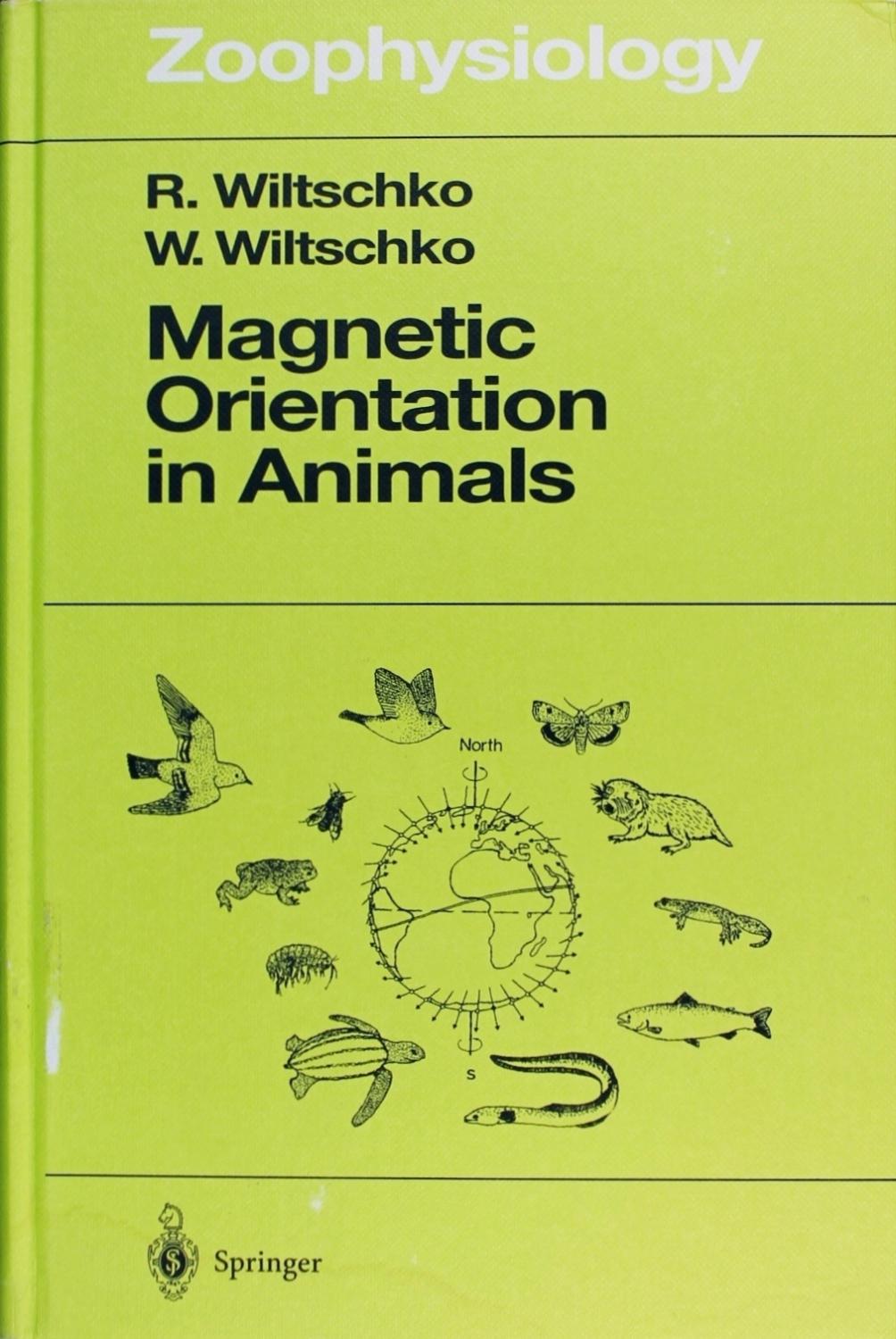
1995, ISBN: 3540592571
[EAN: 9783540592570], [PU: Springer November 1995], Text is in English. Zoophysiology Volume 33. Size - H: 9.5', W: 6.25', D: .625' This item is Used and is listed as being in Very Good c… Mehr…
| AbeBooks.de Firefly Bookstore, Kutztown, PA, U.S.A. [64959016] [Rating: 5 (von 5)] Versandkosten: EUR 41.28 Details... |

1995, ISBN: 9783540592570
Springer-Verlag Berlin and Heidelberg GmbH & Co. K, Hardcover, 305 Seiten, Publiziert: 1995-11-01T00:00:01Z, Produktgruppe: Book, Verkaufsrang: 10560831, Neurology & Clinical Neurophysiol… Mehr…
| amazon.co.uk SerendipityBooksLtd Gut Versandkosten:Usually dispatched within 3 to 4 days. Die angegebenen Versandkosten können von den tatsächlichen Kosten abweichen. (EUR 5.36) Details... |

1995, ISBN: 9783540592570
Gebundene Ausgabe
Springer, Gebundene Ausgabe, Auflage: 1, 314 Seiten, Publiziert: 1995-11-15T00:00:01Z, Produktgruppe: Buch, 1.34 kg, Tiermedizin, Medizin, Kategorien, Bücher, Neurobiologie, Grundlagen, M… Mehr…
| amazon.de super-buecher Versandkosten:Auf Lager, Lieferung von Amazon. Die angegebenen Versandkosten können von den tatsächlichen Kosten abweichen. (EUR 3.00) Details... |

1995, ISBN: 3540592571
Hardcover XVII, 297 S. Gebundene Ausgabe Ehem. Bibliotheksexemplar mit Signatur und Stempel. GUTER Zustand, ein paar Gebrauchsspuren. Ex-library with stamp and library-signature. GOOD co… Mehr…
| Achtung-Buecher.de Antiquariat Bookfarm Sebastian Seckfort, 04509 Löbnitz Versandkosten:Versandkostenfrei innerhalb der BRD. (EUR 0.00) Details... |

1995, ISBN: 9783540592570
XVII, 297 S. Ehem. Bibliotheksexemplar mit Signatur und Stempel. GUTER Zustand, ein paar Gebrauchsspuren. Ex-library with stamp and library-signature. GOOD condition, some traces of use.… Mehr…
| buchfreund.de Antiquariat Bookfarm, 04509 Löbnitz Versandkosten:Versandkosten innerhalb der BRD. (EUR 3.00) Details... |


1995, ISBN: 3540592571
[EAN: 9783540592570], [PU: Springer November 1995], Text is in English. Zoophysiology Volume 33. Size - H: 9.5', W: 6.25', D: .625' This item is Used and is listed as being in Very Good c… Mehr…

Wiltschko, Roswitha, Wiltschko, Wolfgang:
Magnetic Orientation in Animals (Zoophysiology) - gebunden oder broschiert1995, ISBN: 9783540592570
Springer-Verlag Berlin and Heidelberg GmbH & Co. K, Hardcover, 305 Seiten, Publiziert: 1995-11-01T00:00:01Z, Produktgruppe: Book, Verkaufsrang: 10560831, Neurology & Clinical Neurophysiol… Mehr…

1995
ISBN: 9783540592570
Gebundene Ausgabe
Springer, Gebundene Ausgabe, Auflage: 1, 314 Seiten, Publiziert: 1995-11-15T00:00:01Z, Produktgruppe: Buch, 1.34 kg, Tiermedizin, Medizin, Kategorien, Bücher, Neurobiologie, Grundlagen, M… Mehr…
1995, ISBN: 3540592571
Hardcover XVII, 297 S. Gebundene Ausgabe Ehem. Bibliotheksexemplar mit Signatur und Stempel. GUTER Zustand, ein paar Gebrauchsspuren. Ex-library with stamp and library-signature. GOOD co… Mehr…

1995, ISBN: 9783540592570
XVII, 297 S. Ehem. Bibliotheksexemplar mit Signatur und Stempel. GUTER Zustand, ein paar Gebrauchsspuren. Ex-library with stamp and library-signature. GOOD condition, some traces of use.… Mehr…
Bibliographische Daten des bestpassenden Buches
| Autor: | |
| Titel: | |
| ISBN-Nummer: |
The discussion covers "compass" and "non-compass" effects and different types of responses, e.g. alignments, compass orientation, and orientation by the spatial distribution of magnetic parameters, which helps the reader to get a better understanding of the various ways magnetic information may be used.
Detailangaben zum Buch - Magnetic Orientation in Animals (Zoophysiology, 33, Band 33)
EAN (ISBN-13): 9783540592570
ISBN (ISBN-10): 3540592571
Gebundene Ausgabe
Erscheinungsjahr: 1995
Herausgeber: Springer
Buch in der Datenbank seit 2008-01-28T12:19:54+01:00 (Berlin)
Detailseite zuletzt geändert am 2024-03-09T21:02:37+01:00 (Berlin)
ISBN/EAN: 3540592571
ISBN - alternative Schreibweisen:
3-540-59257-1, 978-3-540-59257-0
Alternative Schreibweisen und verwandte Suchbegriffe:
Autor des Buches: wiltschko
Titel des Buches: magnetic orientation animals
Daten vom Verlag:
Autor/in: Roswitha Wiltschko
Titel: Zoophysiology; Magnetic Orientation in Animals
Verlag: Springer; Springer Berlin
297 Seiten
Erscheinungsjahr: 1995-11-15
Berlin; Heidelberg; DE
Gedruckt / Hergestellt in Deutschland.
Gewicht: 0,610 kg
Sprache: Englisch
85,55 € (DE)
87,95 € (AT)
106,60 CHF (CH)
Not available, publisher indicates OP
BB; Book; Hardcover, Softcover / Medizin/Nichtklinische Fächer; Neurowissenschaften; Verstehen; orientation behavior; reptiles; biomangnetism; information; Magnetfeld; magnetic compass; Magnetkompaß; Biomegnetismus; bird; magnetoreception; insects; perception; magnetic field; Magnetrezeption; Orientierungsverhalten; B; Neurosciences; Biomedical and Life Sciences; Animal Physiology; Zoologie und Tierwissenschaften; BC; EA
1 Background.- 1 Magnetic Fields.- 1.1 The Magnetic Field of the Earth.- 1.1.1 The Vector Field.- 1.1.2 Spatial Distribution of the Geomagnetic Field.- 1.1.2.1 Worldwide Gradients and the Non-dipole Field.- 1.1.2.2 Magnetic Topography and Anomalies.- 1.1.3 Temporal Variations of the Magnetic Field.- 1.1.3.1 Short-Term Variation.- 1.1.3.2 Long-Term Variation.- 1.1.4 Man-Made Magnetic Noise.- 1.2 Magnetic Manipulations.- 1.2.1 Altering Magnetic Conditions.- 1.2.1.1 Magnets and Shielding.- 1.2.1.2 Coil Systems.- 1.2.2 Describing Magnetic Fields.- 1.2.2.1 Measuring Direction and Intensity.- 1.2.2.2 Carthesian and Polar Coordinates.- 1.2.3 Treatments Designed to Affect Magnetic Receptors.- 1.3 Summary.- 2 Orientation.- 2.1 Passive Responses Versus Active Behavior.- 2.1.1 Magnetotactic Bacteria.- 2.1.2 Orientation in Animals.- 2.2 Various Uses of Magnetic Information.- 2.2.1 Orientation Via an External Reference.- 2.2.2 The Role of Magnetic Cues.- 2.2.3 Demonstrating Compass Orientation.- 2.3 Analysis of Orientation Data.- 2.4 Summary.- 2 Directional Orientation.- 3 Magnetotaxis and Alignment Behaviors.- 3.1 Magnetotactic Orientation.- 3.2 Early Reports on Alignments in Insects.- 3.2.1 Alignments in Termites.- 3.2.2 Aligned Resting Positions of Diptera.- 3.2.3 Magnetic Alignments in Other Insects.- 3.3 Alignment Behaviors in Honeybees.- 3.3.1 Resting Positions.- 3.3.2 Prominent Directions of the Waggle Dance.- 3.3.2.1 Zero Crossings of ‘Misdirection’.- 3.3.2.2 Dancing on a Horizontal Comb.- 3.4 Alignment Behavior in Vertebrates.- 3.5 Biological Significance.- 3.6 Summary.- 4 Compass Orientation.- 4.1 The Magnetic Compass of Birds.- 4.1.1 Demonstrating Magnetic Orientation in Caged Migrants.- 4.1.2 Functional Characteristics.- 4.1.2.1 Functional Range.- 4.1.2.2 ‘Inclination Compass’.- 4.1.2.3 Constant Magnetic Intensity Required.- 4.1.2.4 Accuracy.- 4.1.3 The Magnetic Compass in Migratory Orientation.- 4.1.3.1 A Widespread Mechanism Among Migrants.- 4.1.3.2 Transequatorial Migrants.- 4.1.3.3 Innate Information on the Migratory Direction.- 4.1.4 Magnetic Compass Orientation in Homing.- 4.1.4.1 Locating the Home Course.- 4.1.4.2 A Reference for Route Reversal.- 4.2 Magnetic Compass Orientation in Other Vertebrates.- 4.2.1 Fishes.- 4.2.1.1 Eels (Anguillidae).- 4.2.1.2 Salmons (Salmonidae).- 4.2.1.3 Elasmobranchs.- 4.2.2 Amphibians.- 4.2.2.1 Salamanders and Newts (Urodela).- 4.2.2.2 Toads (Anura: Bufonidae).- 4.2.3 Reptiles.- 4.2.3.1 Box Turtles (Testudines: Emydae).- 4.2.3.2 Marine Turtles.- 4.2.4 Mammals.- 4.2.4.1 Rodents (Rodentia).- 4.2.4.2 Horses (Perissodactyla: Equidae).- 4.2.4.3 Man (Primates: Hominidae).- 4.2.4.4 The Technical Compass.- 4.3 Magnetic Compass Orientation in Invertebrates.- 4.3.1 Mollusks.- 4.3.2 Crustaceans.- 4.3.2.1 Lobsters (Decapoda: Palinuridae).- 4.3.2.2 Sandhoppers (Amphipoda: Talitridae).- 4.3.2.3 Isopods (Isopoda).- 4.3.3 Insects.- 4.3.3.1 Termites (Isoptera).- 4.3.3.2 Ants, Wasps, and Bees (Hymenoptera).- 4.3.3.3 Beetles (Coleoptera).- 4.3.3.4 Flies (Diptera).- 4.3.3.5 Butterflies and Moths (Lepidoptera).- 4.4 The Use of the Magnetic Field for Direction Finding.- 4.4.1 Different Types of Mechanisms.- 4.4.2 Biological Significance of Magnetic Compass Use.- 4.4.2.1 Courses of Various Origin in Different Behaviors.- 4.4.2.2 One Compass for All Tasks?.- 4.5 Summary.- 5 The Magnetic Compass as Component of a Multifactorial System.- 5.1 Orientation Based on Various Factors of Different Nature.- 5.1.1 Different Types of Orientation Cues.- 5.1.2 Celestial Compass Mechanisms.- 5.2 Homing and Migration of Birds.- 5.2.1 Interaction of Orientation Mechanisms in Homing.- 5.2.1.1 Interaction of Sun Compass and Magnetic Compas.- 5.2.1.2 Mechanisms Determining the Home Course.- 5.2.1.3 A Model for Homing.- 5.2.2 Interaction of Various Cues in Migratory Orientation.- 5.2.2.1 Realization of the Starting Course.- 5.2.2.2 Interactions During Migration.- 5.2.2.3 An Integrated System for Nocturnal Migration.- 5.2.2.4 Day Migrants.- 5.2.2.5 Changes in Migratory Direction.- 5.2.3 Maintaining Directions — Staying on Course.- 5.2.3.1 Free-Flying Birds.- 5.2.3.2 Cage Experiments.- 5.2.3.3 Visual Help to Stay on Course.- 5.3 Migrations and Homing of Fishes and Amphibians.- 5.3.1 Orientation of Atlantic Eels (Gen. Anguilla).- 5.3.1.1 The Life Cycle of Eels.- 5.3.1.2 Preprogrammed Migration.- 5.3.2 Orientation of Salmons (Salmonidae).- 5.3.2.1 Migration to the Nursery Lake.- 5.3.2.2 Seaward Migration.- 5.3.2.3 The Time at Sea and the Return to the Home Estuary.- 5.3.2.4 Return to the Home Stream.- 5.3.2.5 Population-Specific Migration Programs.- 5.3.3 Homing of Toads (Gen. Bufo).- 5.3.3.1 Cues Used in Homing to the Breeding Pond.- 5.3.3.2 Differences Between Species.- 5.4 Orientation at the Borderline Land-Sea.- 5.4.1 Orientation Factors Involved.- 5.4.1.1 Compass Orientation.- 5.4.1.2 The Origin of Landward and Seaward Tendencies.- 5.4.1.3 A Multifactorial System.- 5.4.2 Relative Significance of Various Factors.- 5.5 The Role of the Magnetic Compass Compared to That of Other Cues.- 5.5.1 Control of the Direction of Movement.- 5.5.1.1 Compass Orientation Versus Local Cues.- 5.5.1.2 Magnetic Compass Versus Celestial Compass Mechanisms.- 5.5.1.3 Maintaining a Course.- 5.5.2 The Magnetic Field as a Directional Reference.- 5.5.2.1 Genetically Encoded Courses.- 5.5.2.2 Acquired Courses and Learning Processes.- 5.6 Summary.- 3 Non-Compass Responses.- 6 Non-Compass Orientation by the Magnetic Field.- 6.1 Magnetic Components in Navigational ‘Maps’.- 6.1.1 Magnetic Parameters in the ‘Map’ of Homing Pigeons.- 6.1.1.1 Behavior at Magnetic Anomalies.- 6.1.1.2 Effects Associated with Temporal Changes in the Magnetic Field.- 6.1.1.3 Experimental Manipulations.- 6.1.2 An Assessment of the Role of Magnetic Factors in the Avian ‘Map’.- 6.1.2.1 Variability.- 6.1.2.2 Effects on Homing.- 6.1.2.3 Open Questions about ‘Map’ Effects.- 6.1.2.4 Significance of Magnetic ‘Map’ Effects.- 6.1.3 Magnetic ‘Map’ Factors in the Orientation of Other Vertebrates.- 6.2 Orientation Along the Magnetic Relief.- 6.2.1 The Migration of Cetaceans.- 6.2.1.1 Evidence from Strandings and Sightings.- 6.2.1.2 Following the Relief as Navigational Strategy.- 6.2.2 Orientation of Sharks Near Seamounts.- 6.2.3 The Relief Hypothesis: Problems and Open Questions.- 6.3 Magnetic Parameters Controlling the Routes of Extended Migrations.- 6.3.1 Magnetic Conditions Acting as Triggers During Bird Migration.- 6.3.2 Control of Oceanic Migration in Young Sea Turtles.- 6.3.3 Immediate Control of the Migration Route.- 6.4 Theoretical Considerations.- 6.4.1 What Factors Are Used?.- 6.4.2 Variability and the Detection of Minute Differences.- 6.4.2.1 Spatial Variability.- 6.4.2.2 Temporal Variations.- 6.4.3 Hypotheses with Open Questions.- 6.5 Summary.- 7 Other Non-Compass Effects Associated with Magnetic Fields.- 7.1 Effects Associated with Temporal Variations of the Geomagnetic Field.- 7.1.1 ‘Misdirection’ in the Waggle Dance of Honeybees.- 7.1.1.1 Curves of ‘Misdirection’ Recorded in the Geomagnetic Field.- 7.1.1.2 ‘Misdirection’ in Magnetic Fields of Various Intensities.- 7.1.1.3 Problems and Open Questions.- 7.1.1.4 Other Phenomena Associated with the Waggle Dance.- 7.1.2 Interference with Biological Rhythms.- 7.1.2.1 Breakdown of Rhythmicity Caused by Magnetic Manipulations.- 7.1.2.2 Rhythmicity Based on Periodic Changes in Magnetic Intensity.- 7.1.2.3 Magnetic Variations as Zeitgeber?.- 7.1.3 Effects of K-Variation and Magnetic Storms.- 7.2 Effects of Transmitters, Radar Stations, etc. on Bird Orientation.- 7.2.1 Migrating Birds.- 7.2.2 Homing Pigeons.- 7.3 Responses to Experimentally Induced Magnetic Changes.- 7.3.1 Invertebrates.- 7.3.2 Vertebrates.- 7.4 Summary.- 4 Perception of Magnetic Fields.- 8 Conditioning Experiments.- 8.1 Cardiac Conditioning.- 8.2 Operant Conditioning.- 8.2.1 Directional Training.- 8.2.2 Discrimination of Two Alternatives.- 8.2.2.1 Arthropods.- 8.2.2.2 Vertebrates.- 8.3 Principal Differences Between Magnetic and Other Stimuli.- 8.3.1 Orientation Mechanisms in Training Experiments.- 8.3.2 Constraints of Learning.- 8.3.3 A Factor Containing Directional Information.- 8.4 Summary.- 9 Obtaining Magnetic Information.- 9.1 Perception Based on Induction.- 9.1.1 Voltage Gradients Perceived by Electroreceptors.- 9.1.2 Electrophysiological Recordings from the Lateralis System.- 9.1.3 A Special Mechanism of Some Marine Vertebrates.- 9.2 Perception Via Photopigments.- 9.2.1 Excited Triplet State Macromolecules as Transducers.- 9.2.1.1 The Resonance Model.- 9.2.1.2 A ‘Chemical Compass’ Based on Biradicals.- 9.2.2 Electrophysiological Recordings from the Visual System.- 9.2.3 Behavioral Tests for Light-Dependent Orientation Responses.- 9.2.3.1 Orientation in the Absence of Light.- 9.2.3.2 Orientation Under Light of Various Wavelengths.- 9.2.3.3 Two Patterns of Responses.- 9.2.4 Compass Information from the Retina?.- 9.3 Perception Based on Ferromagnetic Particles.- 9.3.1 Magnetite Particles as Transducers.- 9.3.1.1 The Magnetic Properties of Magnetite Particles.- 9.3.1.2 Magnetic Material Is Widespread Among Animals.- 9.3.1.3 Search for Magnetite in Insects.- 9.3.1.4 Magnetite Found in the Head of Vertebrates.- 9.3.1.5 Receptors.- 9.3.2 Electrophysiological Recordings.- 9.3.2.1 Recordings from the Ophthalmic Nerve in Vertebrates.- 9.3.2.2 Recordings from Honeybees.- 9.3.3 Treatments Designed to Affect Magnetite-based Receptors.- 9.3.3.1 Honeybees.- 9.3.3.2 Homing Birds.- 9.3.3.3 Migrating Birds.- 9.3.3.4 The Interpretation of Behavioral Findings.- 9.3.4 Receptors Based on Magnetite Particles.- 9.3.4.1 Is the ‘Map’ Involved?.- 9.3.4.2 Single Domains or Superparamagnetic Particles?.- 9.3.4.3 Open Questions.- 9.4 Magnetoreception in the Light of the Available Evidence.- 9.4.1 Open Questions About Transducers.- 9.4.2 Evolutionary Considerations.- 9.5 Other Electrophysiological Responses to Magnetic Stimuli.- 9.5.1. Recordings from Vertebrates.- 9.5.2 Recordings from Invertebrates.- 9.6 Summary.- 5 Outlook.- 10 Research on Magnetic Phenomena in Biology.- 10.1 Slow Acceptance of Magnetic Orientation.- 10.2 Present and Future Research.- 10.2.1 Bioelectromagnetic Research.- 10.2.2 Magnetoreception and Magnetic Orientation.- References.- Taxonomic Index of Animal Species.Weitere, andere Bücher, die diesem Buch sehr ähnlich sein könnten:
Neuestes ähnliches Buch:
9783642797491 Magnetic Orientation in Animals (Roswitha Wiltschko)
< zum Archiv...



